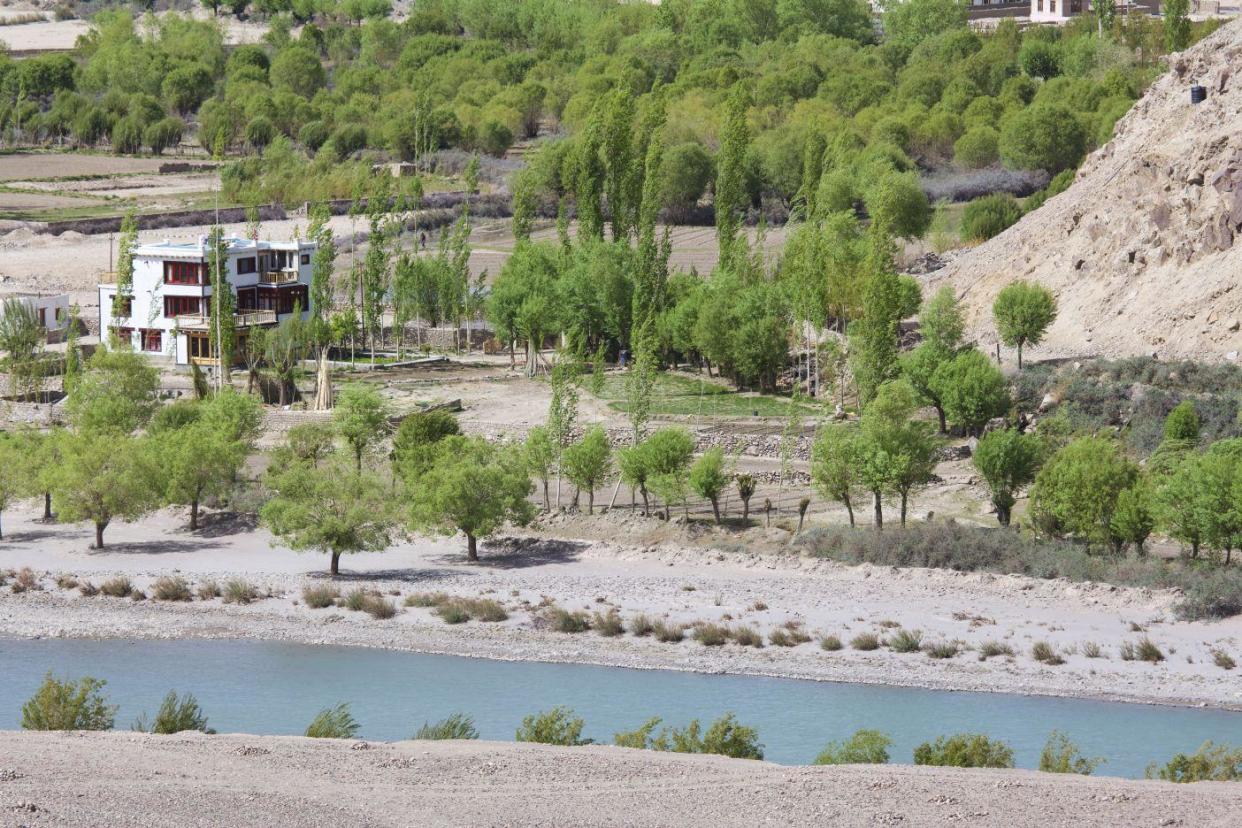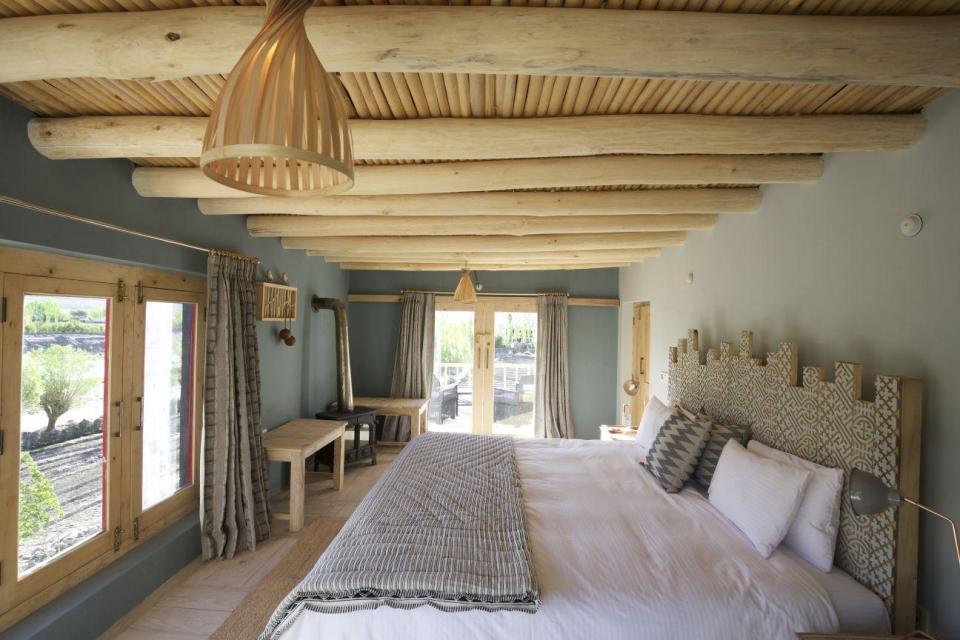The gentle side of Himalayan trekking in Ladakh

"Fancy a walk up the Himalayas?” hardly evokes relaxing images. Oxygen canisters, hiking-boot blisters and frostbite? Sure. Fine wine, afternoons spent drinking chai in glorious sunshine and meandering along gentle inclines to pre-laid picnics? Not so much. Luckily for someone still scarred from their Duke of Edinburgh bronze award hike, the latter is on offer at the Shakti Ladakh Village Experience in Ladakh, often called “Little Tibet” in the north Indian state of Jammu and Kashmir. Rather than treks and soggy sleeping bags, we’d be taking strolls through villages, staying in one of Shakti’s comfortable houses with five-star service.
After a brief stopover in Delhi, we fly over a crumpled blanket of mountains into Leh, the largest town in Ladakh. At 3,332m above sea level — Leh airport is the world’s highest — the skies are achingly blue as we jump into a waiting van to drive to the first house in Nimoo. The plains we wind through are like a lunar landscape, mountains hulking from the earth like prehistoric dinosaur humps; a clear lake reflects them as if in a mirror.
Every few hundred metres, there’s one of Ladakh’s hilarious road signs. I later find a book documenting such warnings as the saucy “Blow horn on my curves”, the rhythmic “After whisky driving risky” and the blunt “Better late than never”. There’s also, given our proximity to Pakistan, a huge military presence. On a mildly terrifying bike ride down the mountainside from a visit to Basgo Fort on our first evening, we pass a seemingly endless stream of soldiers out jogging. Bizarre indeed, considering at least half the population of Ladakh are Tibetan Buddhists, and fundamentally opposed to violence.
Soon we’re at Nimoo and our idyllic red-and-white house on the Indus River, all rustic thatched roof on the outside and boho luxe inside. Strings of rainbow-hued prayer flags flutter everywhere in the breeze. The whole scene is soaked in a peaceful silence. Shakti founder Jamshyd Sethna leases the houses from their Ladakhi owners and does them up until they’re fit for royalty (or at least actor Ed Norton, who’s apparently a Shakti fan). Nimoo, for instance, is owned by a 14th-generation medicine man; he and his wife live downstairs. Much of what we eat, from cabbage pakoras to mutton dumplings and curries, is made from local ingredients.
After a cup of chai and a quick exploration of our house (simple yet luxurious, with plush beds and high-powered showers) we take off on a village walk through sleepy Nimoo. Here we encounter stupas — monuments containing Buddhist relics — adorned with prayer flags, and nibble sea buckthorn berries. In Leh a few days later, we drink those same berries in a mango-like juice while looking for authentic pashminas and smiling at young hipster monks who accessorise their robes with Nikes and Ray-Bans.
The next day we take a 19-mile drive to the village of Chilling on hairpin roads. The drive passes swiftly, thanks to the scenery — river rapids, monumental mountains and yet more hilarious signs (“Don’t be gama in the land of lama”). If Nimoo was quiet, Chilling seems abandoned. Here we meet a coppersmith, about 100 years old, who seems as if he’s been in that one position, calmly making his brass and copper spoons and bracelets, for decades.

The fairy-tale moment passes as we tug on wetsuits for white-water rafting on rapids we’d passed earlier. “If you fall out, we’ll see you in Pakistan!” our raft guide jokes. Luckily, the river is calm.
River rafting is as hectic as it gets on our stay — thankfully, given that the altitude makes even our short village walks tiring. Climbing the stairs of Buddhist monasteries — Alchi, where we spin prayer wheels, Likhir, with its glowing 75ft Buddha, Leh’s 16th century Ancient Palace — leaves us breathless. Perhaps the best monastery visit comes while staying at the Indus River House, when we’re awoken at 4am to drive to Thiksey for early-morning prayers. Young monks whisper throughout, to the scolding of the elders.

We drink butter tea as the chanting thrums through us in the glowing red room. It feels uniquely peaceful, a release from physical activity or mental gymnastics. Hideously clichéd as it sounds, I leave feeling renewed.
It’s fitting, then, that “shakti” symbolises feminine energy. We’ve had a crash course in Ladakhi serenity, without a minute of yoga or meditation — and crossed the Himalayas without lacing a hiking boot.
Details: Ladakh
Red Savannah (01242 787800, redsavannah.com) offers 11 nights from £7,795 pp, including eight in Ladakh, all walks and guides, transfers, three nights in Delhi, domestic and international flights.

 Yahoo News
Yahoo News 
